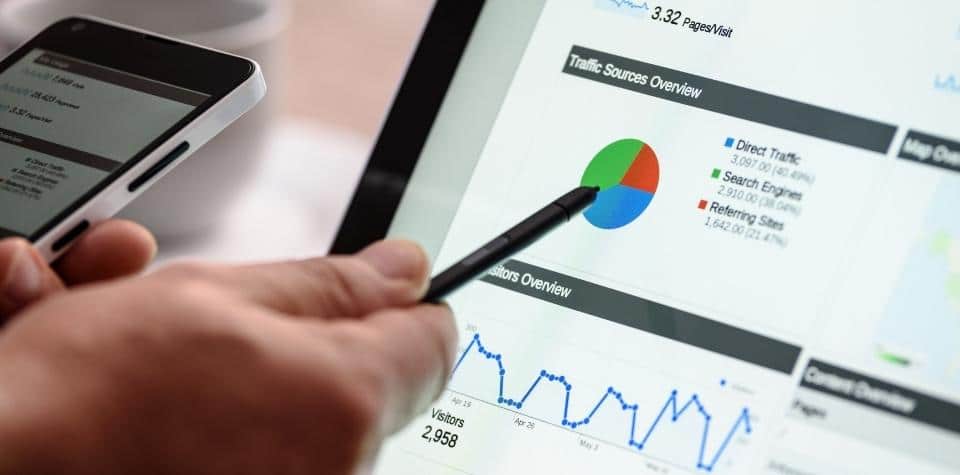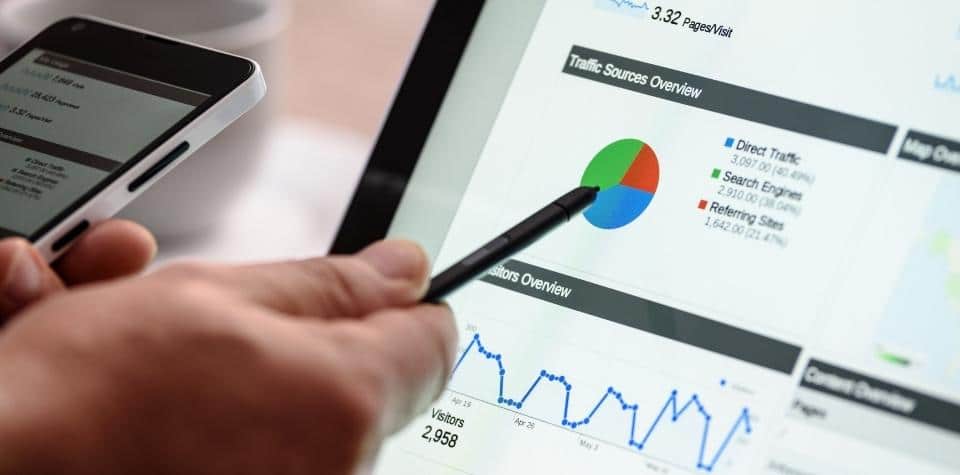What Are Content Marketing KPIs?
Before we dive into the different KPIs that you should track, let’s first define what content marketing KPIs are. Content marketing KPIs are metrics that help you measure the success of your content marketing strategy. By tracking these KPIs, you can determine whether your content is resonating with your audience and achieving your desired results.
By being equipped with this information, you can make necessary changes to your content marketing strategy to ensure that it is as effective as possible and achieves your desired results.
How to Track Your KPIs for Digital Marketing?
There are a number of different ways that you can track your KPIs. If you’re using Google Analytics, you can set up custom reports to track specific metrics. You can also use other tools such as AgencyAnalytics or SEMrush to measure your content’s reach and engagement.
Why Do You Need to Track Your KPIs?
Now that you know what content marketing KPIs are and how to track them, let’s discuss why they are so important. As we mentioned earlier, KPIs help you measure the success of your content marketing strategy. By tracking your KPIs, you can determine whether your content is resonating with your audience and achieving your desired results. Additionally, monitoring your KPIs can help you make necessary adjustments to your strategy if needed.
10 Content Marketing KPIs
Now we will discuss some of the most critical content marketing KPIs that you should be tracking.
1. Website Traffic
One of the most important KPIs that you should track is website traffic. This metric measures how many people are visiting your website and can give you insights into the reach of your content.
Website traffic can even be broken down page-by-page. Allowing you to see which blog posts or pages are getting the most traffic. This insight can be valuable when planning future content.
How to measure Website Traffic KPI
Google Analytics is a great tool for measuring traffic on your website. Most website analytics tools are able to track this metric, however, we find Google Analytics to be one of the most accurate.
One downside to Google Analytics is that it only works for sites that you have installed it on and have access to. So when looking at competitors or if your own site does not have Google Analytics yet, tools like Ubersuggest and SEMrush can be useful and are able to produce fairly accurate estimates of website traffic.
How to Improve Website Traffic
If you want to improve your website traffic, there are a number of things you can do. For starters, you can promote your content on social media or through email marketing. You can also optimize your website for search engine optimization (SEO) to ensure that your content is easy to find online.
2. Number of Leads Generated
Another important KPI to track is the number of leads generated through your website and digital marketing efforts. This metric measures how effective your content is at converting visitors into leads.
If you’re not generating enough leads from your content, it may be time to reevaluate your strategy. Are you targeting the right audience? Is your call-to-action effective? These are just a few questions that you should ask yourself if you’re not seeing the results that you desire.
How to measure the Number of Leads Generated
There are a number of different ways that you can measure this KPI. If you’re using Google Analytics, you can set up custom reports to track specific metrics. These metrics could include forms filled out, calls from the site, or newsletter signups.
How to Improve the Number of Leads Generated
If you want to improve the number of leads generated from your content, there are a few things you can do. First, make sure that you’re targeting the right audience. Second, ensure that your call-to-action is effective. Finally, consider using lead magnets such as ebooks or free trials to convert more visitors into leads.


3. Organic Search Rankings
Organic search rankings are another important KPI to track. This metric measures where your website ranks in search engines for certain keywords.
If your website is ranking lower than you’d like, it may be time to invest in SEO. By optimizing your website for search engines, you can improve your organic search rankings and get more eyes on your content.
How to measure Organic Search Rankings
There are plenty of tools designed to measure your rankings on search engines such as Google or Bing. Some of the most well known in the industry are:
How to Improve Organic Search Rankings
If you want to improve your organic search rankings, there are a few things you can do. First, make sure that your website is optimized for SEO. This includes things like using the right keywords and having high-quality content. You can also promote your content on social media or through guest blogging.
4. Bounce Rate
Bounce rate is another important metric to track. This metric measures the percentage of people who leave your website after viewing only one page.
A high bounce rate can indicate that your content is not relevant to your target audience or that your website is not user-friendly. If you’re seeing a high bounce rate, it’s time to make some changes to your strategy or your website.
How to Measure Bounce Rate
Using Google Analytics is one of the best and simplest ways to measure your bounce rate on your website. You can even see the bounce rate on specific pages of your website to identify which pages or blogs are not performing well.
How to Improve Bounce Rate
There are a number of things you can do to improve your bounce rate. First, make sure that your content is relevant to your target audience. Second, ensure that your website is easy to navigate and use. You can also try using more engaging visuals or adding new features to your websites such as live chat or a blog. Finally, consider using pop-ups or other forms of lead capture tools to keep visitors on your site longer while also capturing the desired information to make them a lead or get them to convert into a customer.
5. Time on Page
The Time on Page KPI metric measures how long visitors spend on a specific page of your website before leaving.
If you’re seeing a low time on page statistic, it could indicate that your content is not interesting or engaging enough. If you want to keep people on your site longer, it’s important to create high-quality content that will hold their attention.
How to Measure Time on Page
You can measure time on page in Google Analytics by using one of their custom reports. With this tool, you can even see the average time on page for specific pages of your website including your blog. Other tools, such as SEMrush, are able to fairly accurately estimate time on page as well.
How to Improve Time On Page
There are a number of things you can do to improve your time on page stats. First, make sure that your content is well-written and engaging. You can also add multimedia elements such as images or videos to help break up the text and keep people interested. Finally, consider using internal links to other pages on your website to keep people browsing for longer.


6. Pages per Session
The Pages per Session metric measures how many pages visitors view during a single session on your website.
If you’re seeing a low number of pages per session, it could indicate that your website is not easy to navigate or that your content is not relevant to your target audience. If you want people to view more than one page on your site, it’s important to create high-quality content that is well-organized and easy to find. You can also use well place Call-to-Actions (CTAs) to keep people moving throughout the site.
How to Measure Pages per Session
You can measure pages per session in Google Analytics through one of their standard reporting tools. Other popular analytic tools are also able to accurately estimate this statistic.
How to Improve Pages per Session
There are a number of things you can do to improve your pages per session statistic. First, make sure that your website is easy to navigate and use. Second, ensure that your content is well-organized and easy to find. You can also use internal links to other pages on your website to keep people browsing for longer. Finally, consider using pop-ups or other forms of lead capture tools to keep visitors on your site longer while also capturing the desired information.
7. CTR of Internal Links
The Click-Through-Rate (CTR) of Internal Links measures the percentage of people who click on links to other pages on your website.
If you’re seeing a low CTR, it could indicate that your content is not relevant to your target audience or that your website is not user-friendly. If you want people to click on links to other pages on your site, it’s important to create high-quality content that is well-written and engaging.
How to Measure CTR of Internal Links
You can measure the CTR of internal links in Google Analytics by creating a custom report. You can also see the average CTR for specific pages of your website including blogs, service pages, homepage, and much more.
How to Improve Your Click-Through-Rate
There are a number of things you can do to improve the CTR of internal links on your website. First, make sure that your content is well-written and engaging. You can also use strong calls-to-action (CTAs) to encourage people to click on specific links. Finally, consider using internal linking strategies such as keyword linking or contextually relevant linking to help improve the CTR.
8. Social Shares
The Social Shares metric measures how often your content is shared on social media.
If you’re seeing a low number of social shares, it could indicate that your content is not interesting or engaging enough to the visitors on your site. If you want people to share your content, it’s important to create high-quality, shareable content.
How to Measure Social Shares
You can measure social shares by using tools like Brandwatch or plugins like GetSocial.io. These tools will help track how often your content was shared and on which platforms.
How to Improve Social Shares
There are a number of things you can do to encourage social sharing on your website. First, make sure that your content is high-quality and shareable. You can also use strong CTAs and social media buttons to make it easy for people to share your content. Finally, consider using social media platforms like Twitter, Facebook, or LinkedIn to promote your content which will allow for easier sharing.


9. Comments
The Comments metric measures how often people leave comments on your blog posts or other forms of content.
If you’re seeing a low number of comments, it could indicate that your content is not interesting or engaging enough. If you want people to leave comments on your site, it’s important to create high-quality content that is well-written and insightful.
How to Measure Comments
You can measure comments by using plugins like Disqus. These tools will help track how many people are leaving comments on your site.
How to Improve Comments
There are a number of things you can do to encourage comments. First, you can end your article with a thought-provoking question that encourages them to leave their thoughts below. You can also use social media platforms like Twitter or Facebook to promote your content and encourage people to leave comments. Finally, you can offer incentives like giveaways or discounts to encourage people to leave comments on your site such as “comment below for a chance to win X”.
10. Backlinks
The Backlinks metric measures how many other websites are linking to your content.
If you’re seeing a low number of backlinks, it could indicate that your content is not high-quality or informative enough. If you want people to link to your site, it’s important to create shareable content that is unique, well-written, and insightful.
How to Measure Backlinks
You can measure backlinks by using tools like SEMrush, Moz, AgencyAnalytics, or Ahrefs. These tools will help track how many websites are linking to your site and even tell you exactly which websites are linking to yours.
How to Improve Backlinks
There are a number of things you can do to encourage backlinks. First, create high-quality content that is well-written and informative. You can also reach out to other websites in your industry and ask them to link to your site. Finally, consider using social media platforms or forums to promote your website and encourage people to link back to it.
Final Thoughts
There are a number of different metrics you can use to measure the success of your content marketing strategy. However, these ten critical KPIs are a great place to start. By tracking and measuring these KPIs, you’ll be able to get a better understanding of what’s working well and where you need to make improvements. And, most importantly, you’ll be able to ensure that your content marketing strategy is on track for success.













